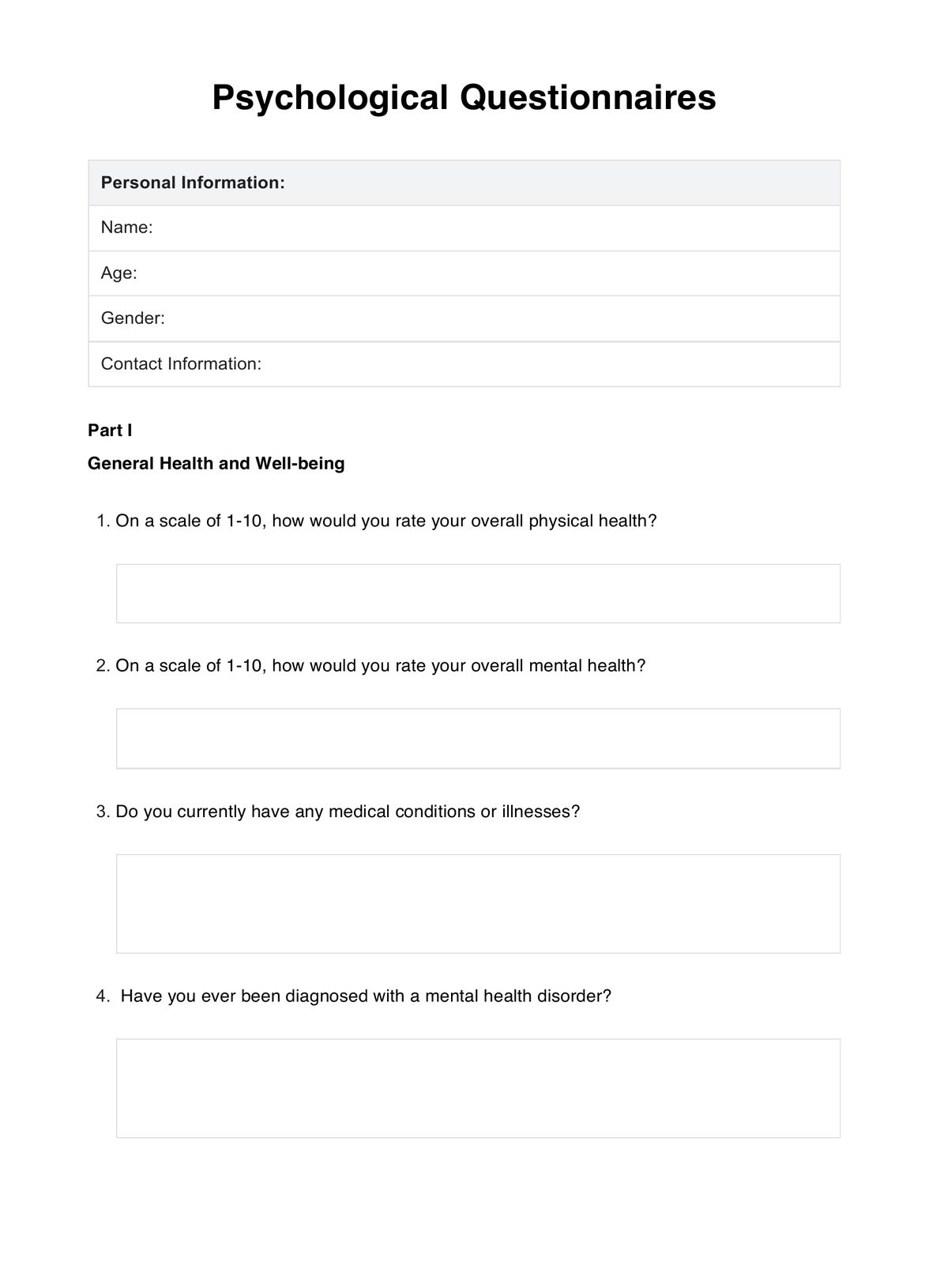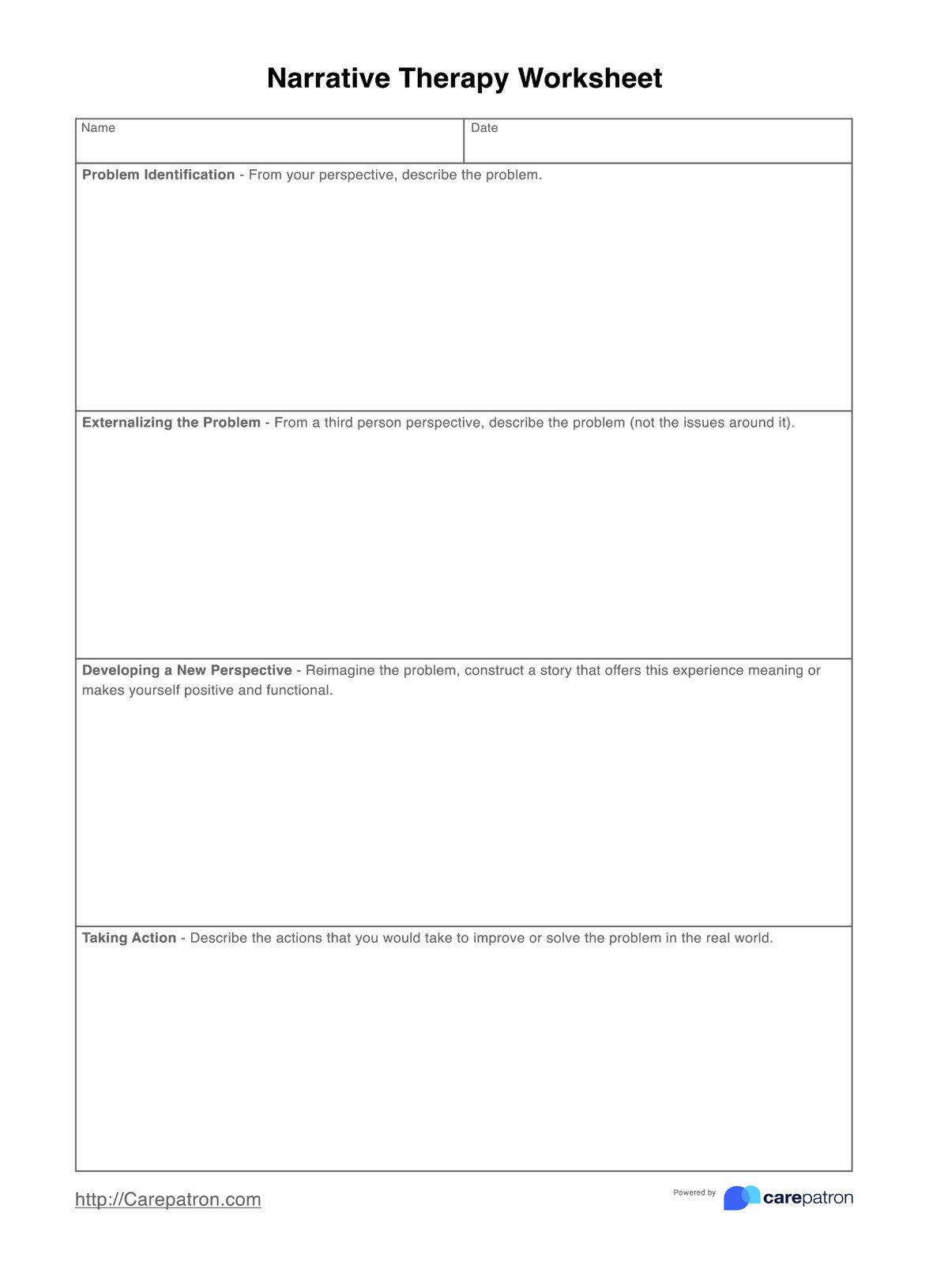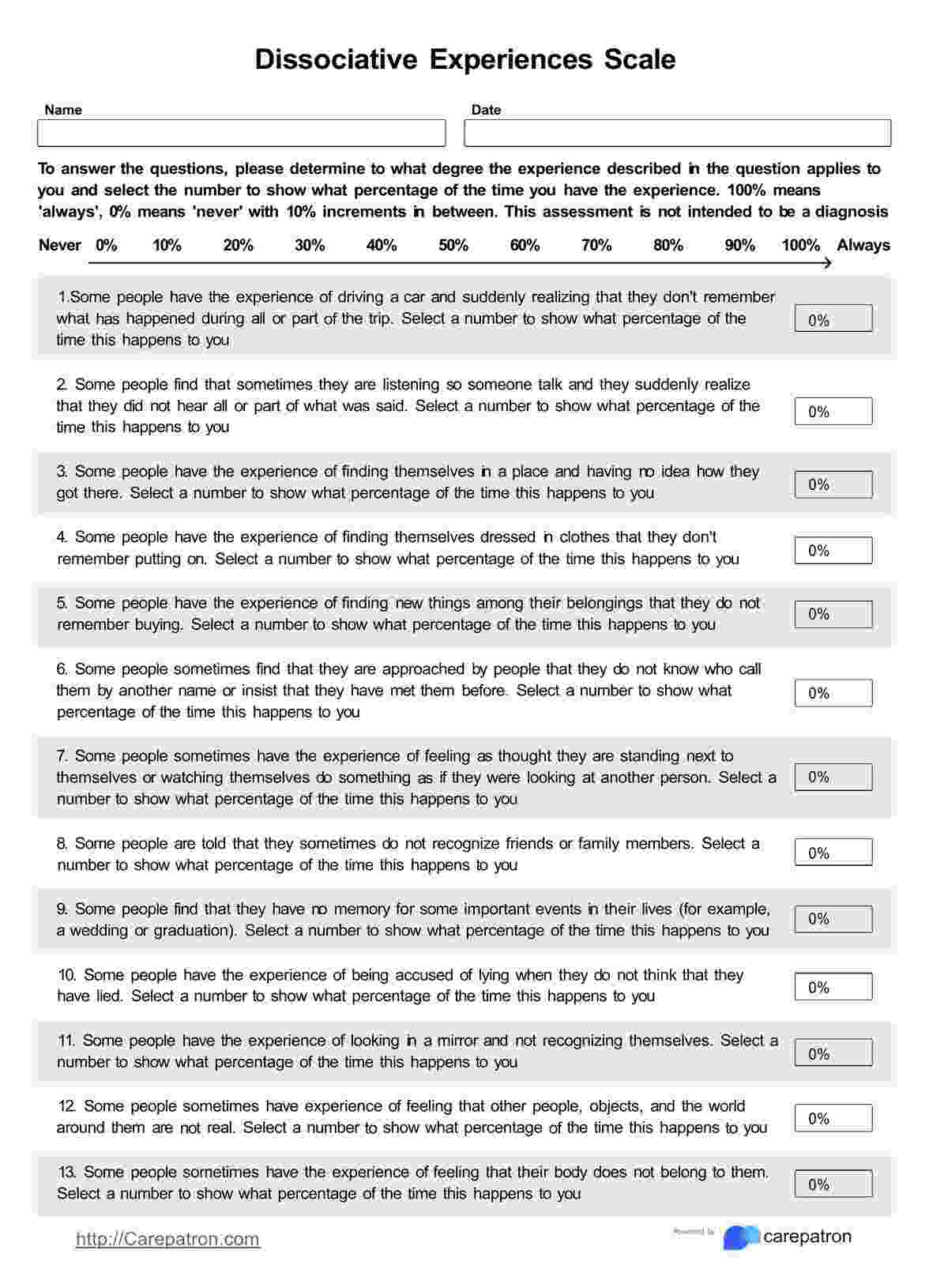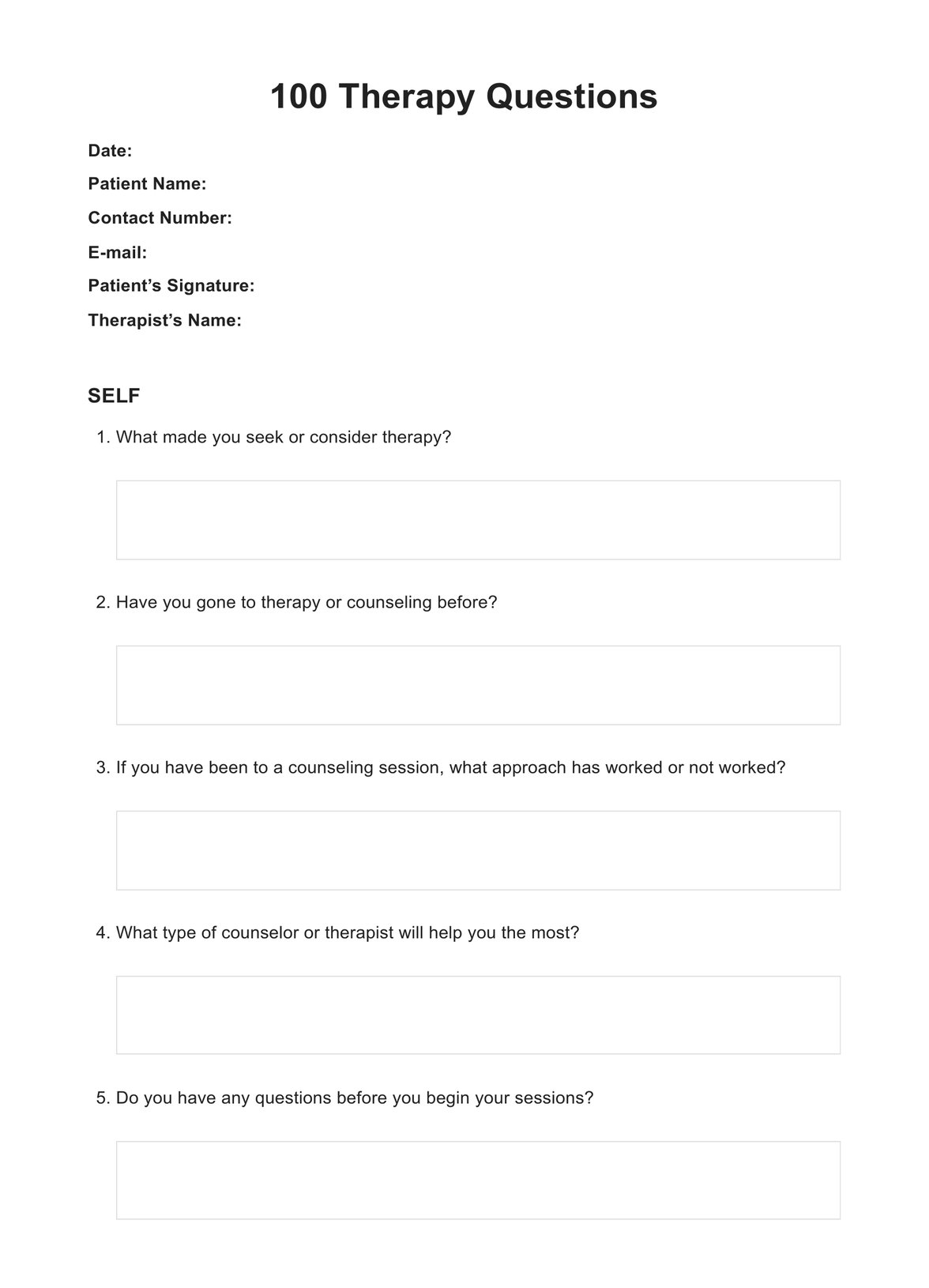Corneal Reflex Test Reports
Access a free Corneal Test Report template and accurately document the results of a corneal reflex test. Download the free PDF and example here.


What is a Corneal Reflex Test?
The corneal reflex test, or blink reflex, is a crucial neurological assessment predominantly used in eye care. This test evaluates the functioning of the fifth cranial nerve (trigeminal nerve) and the seventh cranial nerve (facial nerve), which play an instrumental role in the blink reflex.
The procedure involves gently touching the patient's cornea with sterile cotton or a wisp of cotton swab. An immediate and involuntary blink in both eyes characterizes a normal response. Absence or delay in the blink response may indicate potential neurological damage. The results of the corneal reflex test are then meticulously documented in the Corneal Reflext Test Report, which allows for accurate diagnosis and treatment planning.
This report allows ophthalmologists, optometrists, and other eye care professionals to monitor the health of their patients' corneal reflexes over time. It is also used to communicate the findings and progress of the test with other healthcare providers involved in the patient's care.
Corneal Reflex Test Reports Template
Corneal Reflex Test Reports Example
How Does it Work?
Carepatron's free Corneal Reflex Test Report template lets you record your patient's information, including name, date of birth, and medical history. It also has designated sections to document the procedure and results of the test. Here's how to use the document:
Step One: Download the Corneal Reflex Test Report
Access the printable Corneal Reflex Test Report using the link on this page. You can also get it from the Carepatron app or our resources library.
Step Two: Fill in the Patient's Information
Fill in the required details of your patient, including their name, date of birth, and medical history. This information is essential for accurate record-keeping and future reference.
Step Three: Perform the Corneal Reflex Test
Follow standard procedures to perform the corneal reflex test on your patient. Use sterile equipment and document the steps in the report's designated section.
Step Four: Record the Results
After performing the test, record your patient's results in the appropriate section of the report. This includes documenting any absence or delay in their blink response and any other observations made during the test.
Step Five: Save and share
Once complete, save a digital copy of your Corneal Reflex Test Report for your patient's electronic health records. You can also easily share it with other healthcare providers involved in the patient's care to keep them informed of the test findings and progress.
When Would you use this Template?
You can use the Corneal Reflex Test Report template when conducting a corneal reflex test on a patient. This report helps document the results and observations made during the test, ensuring accurate record-keeping and future reference. Moreover, you can use this document to:
Track changes in the patient's blink response over time
By regularly performing the corneal reflex test and documenting the results, you can track any changes in the patient's blink response over time. This can help monitor their condition or evaluate the effectiveness of specific treatments.
Communicate with other healthcare providers
The Corneal Reflex Test Report can also communicate with other healthcare providers involved in your patient's care. By sharing this document, you can inform them of the test findings and progress, allowing for better collaboration and continuity of care.
Educate patients
The report can be an educational tool for patients, giving them a detailed explanation of the corneal reflex test and its purpose. This can help ease any anxiety or confusion about the procedure and empower them to participate in their healthcare actively.
What do the Results Mean?
The results of the Corneal Reflex Test are used to assess the function of the cranial nerve V (trigeminal nerve) and VII (facial nerve). A typical response would involve both eyes blinking when the cornea is touched with a cotton wisp or other stimulus. If only one eye blinks, it could indicate a problem with that side's facial nerve. If neither eye blinks, it could suggest a possible trigeminal nerve or brainstem issue.
If the corneal reflex test results are abnormal, further evaluation and diagnostic tests may be necessary to determine the underlying cause. This could include imaging studies, nerve conduction tests, or a referral to a specialist for further evaluation.
Early detection of abnormalities can lead to earlier treatment and better patient outcomes. Therefore, following up on abnormal findings and working with other healthcare providers to develop a comprehensive treatment plan is crucial.
It is essential to note that the findings of this test should not be used as a standalone diagnosis and should always be interpreted in conjunction with other clinical assessments and tests.
Commonly asked questions
A primary care physician, ophthalmologist, neurologist, or other healthcare professional may request a Corneal Reflex Test. It may also be included in a routine neurological examination for certain patients.
Corneal Reflex Tests are used to assess the function of cranial nerves and can help diagnose problems with nerve pathways and structures in the face, brainstem, or facial muscles. They may also be used as a follow-up test for patients with known neurological disorders.
The test takes only a few minutes, but patients may need to wait for results or further evaluation from a specialist. The process can take 15 minutes to an hour, depending on individual circumstances.


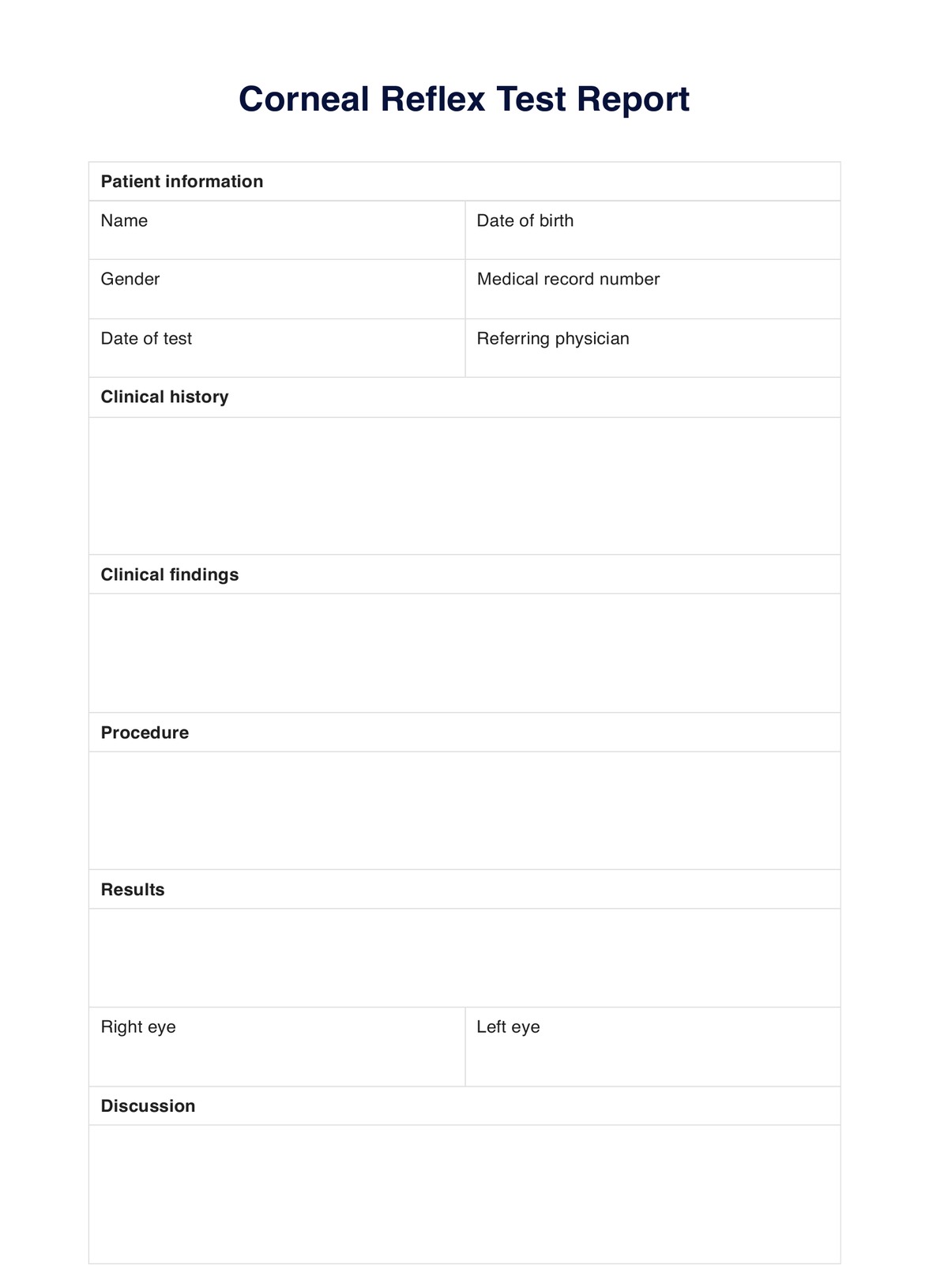
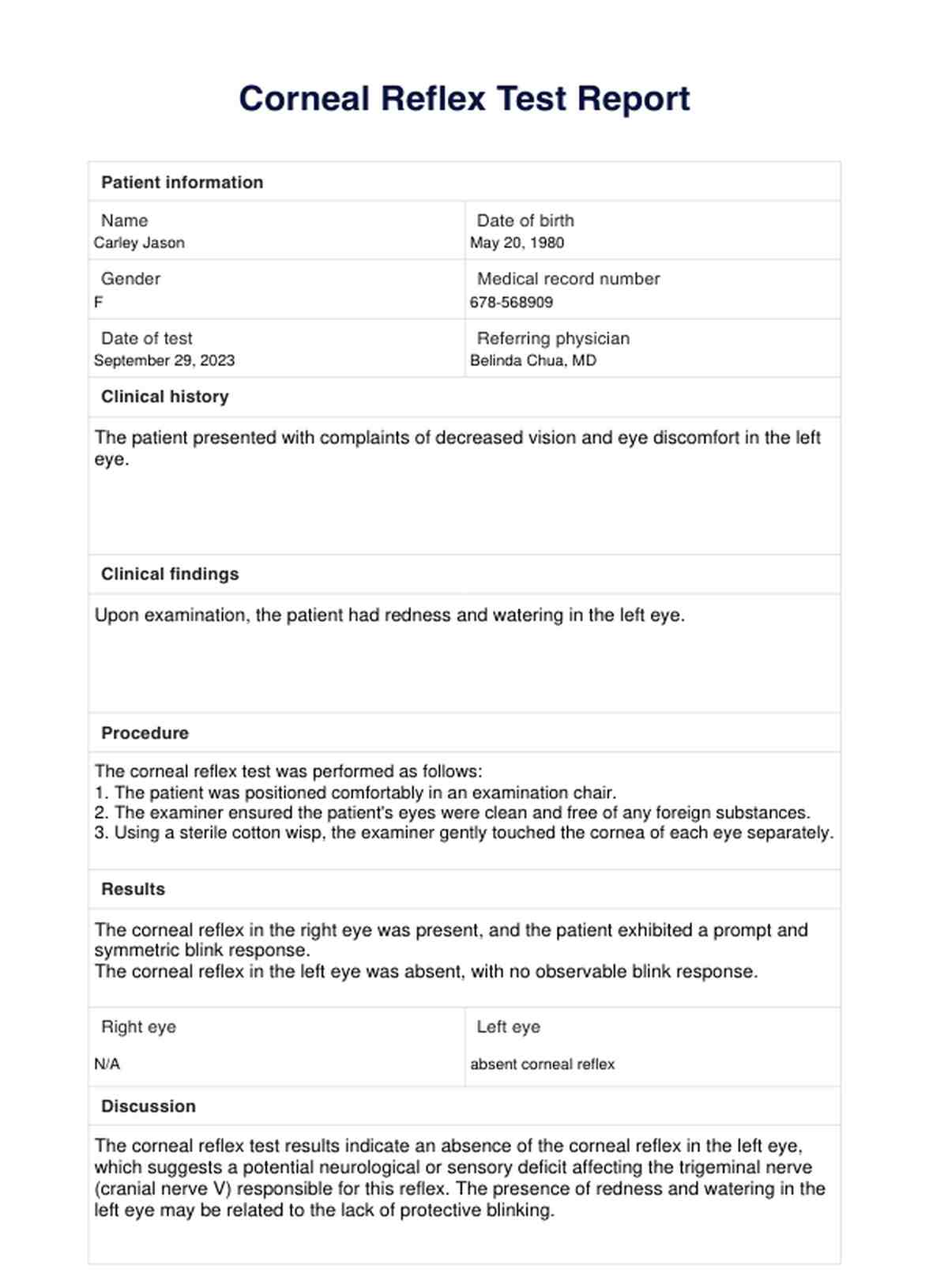













-template.jpg)






























































































